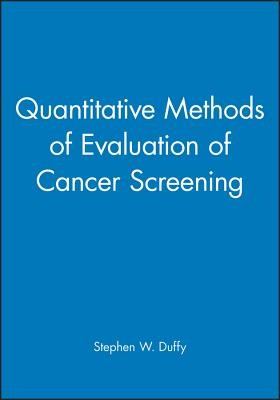
- We will send in 10–14 business days.
- Author: Duffy
- Publisher: John Wiley & Sons
- ISBN-10: 0470689277
- ISBN-13: 9780470689271
- Format: 15.6 x 23.4 x 1.1 cm, kieti viršeliai
- Language: English
- SAVE -10% with code: EXTRA
Reviews
Description
Cancer screening programmes have become routine practice throughout the developed world - aiming to detect the presence of the disease prior to the manifestation of symptoms, and to increase the likelihood of successful treatment. Naturally, these programmes require regular monitoring to ensure that screening quality is maintained, and to advance the early-warning system as much as possible. Quantitative Methods for the Evaluation of Cancer Screening is a professional title designed to provide the researchers of these screening programmes with up-to-date methods and tools for improving evaluation. The book presents an introduction to cancer screening and to the methods that are employed for its monitoring, followed by an in-depth account of the more complicated modelling approaches. Each chapter is written by an international expert in the field, and imparts practical specialist information that the reader can apply to the evaluation of their own programmes. Case studies illustrate the methods in practice and provide further illumination of the fields of breast, cervix, large bowel, and neuroblastoma screening.
EXTRA 10 % discount with code: EXTRA
The promotion ends in 21d.02:38:27
The discount code is valid when purchasing from 10 €. Discounts do not stack.
- Author: Duffy
- Publisher: John Wiley & Sons
- ISBN-10: 0470689277
- ISBN-13: 9780470689271
- Format: 15.6 x 23.4 x 1.1 cm, kieti viršeliai
- Language: English English
Cancer screening programmes have become routine practice throughout the developed world - aiming to detect the presence of the disease prior to the manifestation of symptoms, and to increase the likelihood of successful treatment. Naturally, these programmes require regular monitoring to ensure that screening quality is maintained, and to advance the early-warning system as much as possible. Quantitative Methods for the Evaluation of Cancer Screening is a professional title designed to provide the researchers of these screening programmes with up-to-date methods and tools for improving evaluation. The book presents an introduction to cancer screening and to the methods that are employed for its monitoring, followed by an in-depth account of the more complicated modelling approaches. Each chapter is written by an international expert in the field, and imparts practical specialist information that the reader can apply to the evaluation of their own programmes. Case studies illustrate the methods in practice and provide further illumination of the fields of breast, cervix, large bowel, and neuroblastoma screening.


Reviews